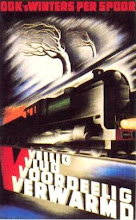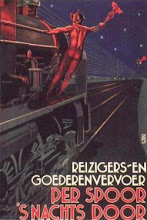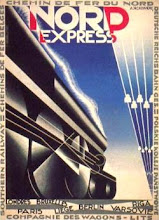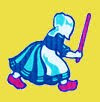Over the years, I have accumulated multiple highly dilapidated, rusted Lionel train cars and they are waiting for repair in my box with rusties. One of the more time-consuming steps in the restoration process is stripping the original paint. This summer I was treated with a sand-blaster box, that as you probably know works with glass pearls (200 micron beads) and not with sand, but that is fairly irrelevant. What is pleasant, however, is that old paint layers can be removed in a few minutes time. And that really helps. The barrier to grab an old rusty and to strip it from its paint and rust is now minimized.
Anyhow, I had this old Lionel 265 tender laying about in my rusty car box, and I figured it was a good candidate car to test sand blasting on.
 |
| Lionel 265 tender |
 |
| Backside of a Lionel 265 tender |
As you can see for yourself, it pretty much is rusted all over and in need of resuscitation. After disassembly, which is dead simple due to the four big screws on the bottom, I first treated the surfaces with paint stripper and brushed the surfaces lightly to get rid off the tacky gunk. Anyhow, although most of the paint was removed, still sufficient was left in all the nooks and crannies. Moreover, the rust became more prominently visible.
 |
| Tender after paint stripping |
The bottom plate was heavily corroded and so was one of the side panels. Time for sand blasting action. Within 5 minutes the surfaces looked completely different: only metal was left. Unfortunately, the rusting had gone deep in the bottom plate, where pitting is now eminent.
Anyhow, if you ever have an off-day, I would recommend sand-blasting rusted objects; it swings your mood right back to happiness.
The pitting was serious in the bottom plate at both sides. But as this plate is hardly visible, I reckoned that filling these holes with putty would be a waste of time. So after priming the lot, the black paint was sprayed on. The assembly was straight-forward. The shiny rods on the sides of the car are made from a very soft alloy and therefore, difficult to get in the right shape and keep it that way. The connecting rod to the engine was too far rusted and had a non conventional hole, so I replace that with a piece of cut and painted aluminium.
The tender is back on track, as you can see. And yes, I did clean the layout.
The lessons learned:
- Sand blasting is fun,
-You do not need to remove old paint with stripper, you can blast it off directly
-I needed a more hefty air compressor for sand blasting, but what a joy it is.












No comments:
Post a Comment